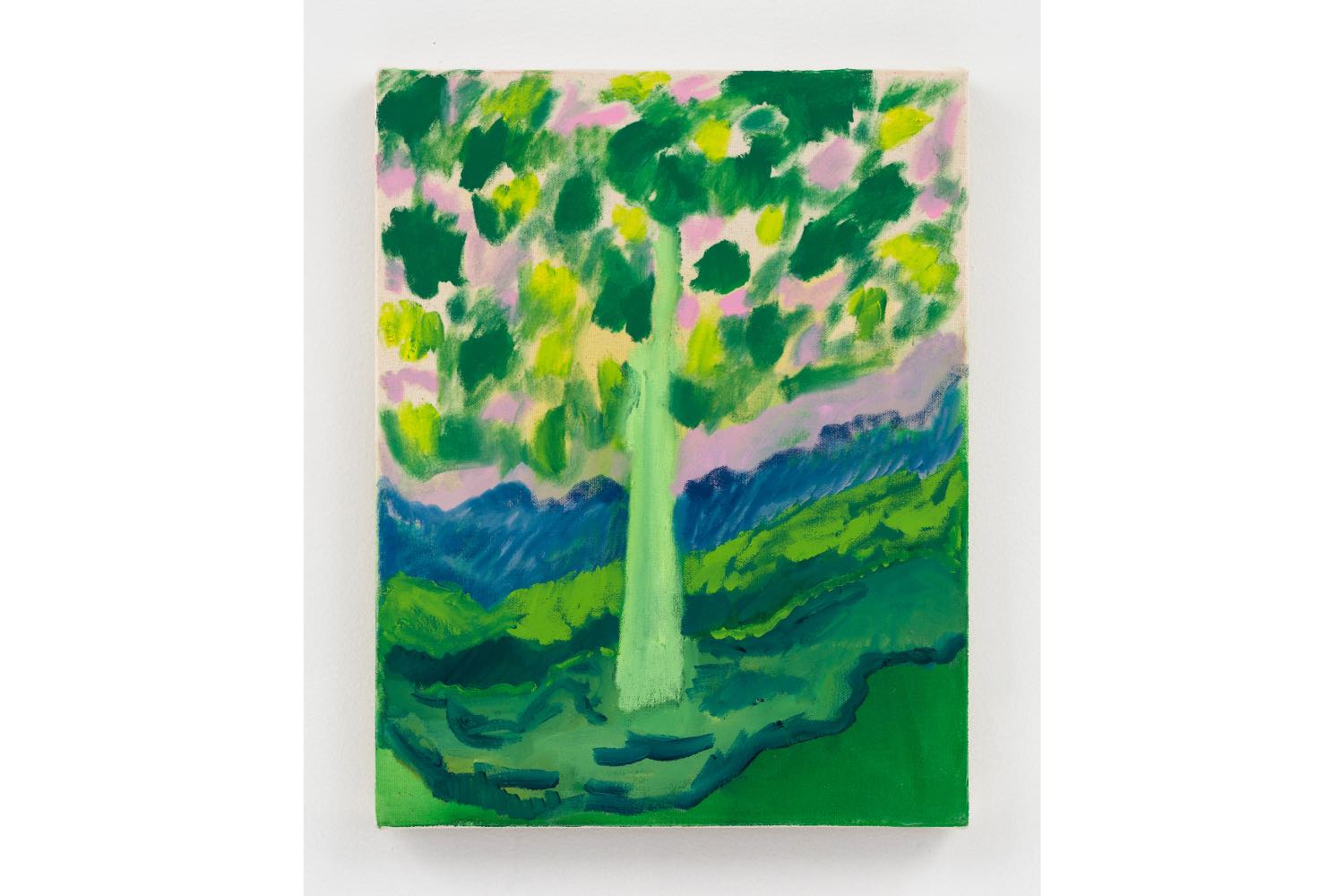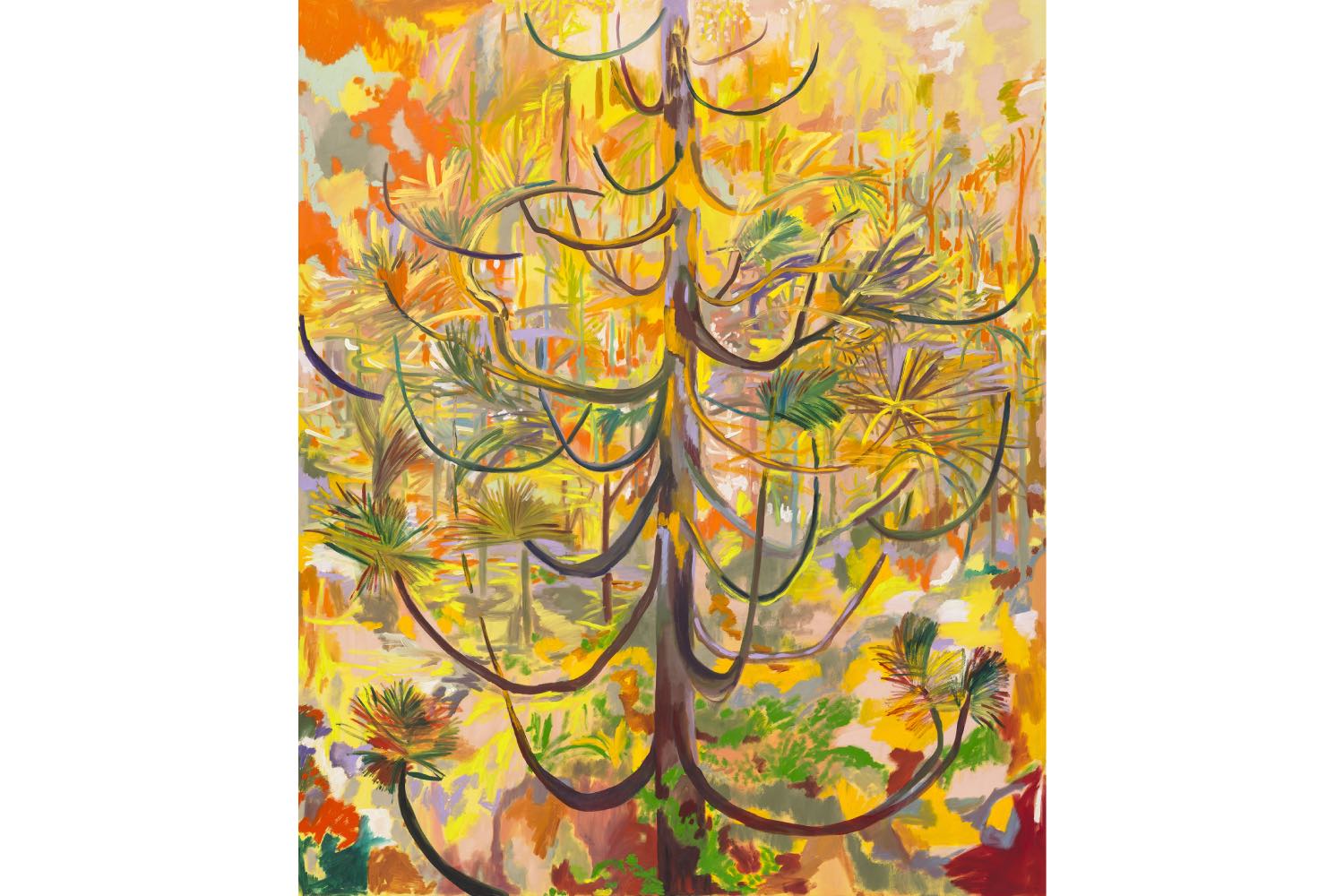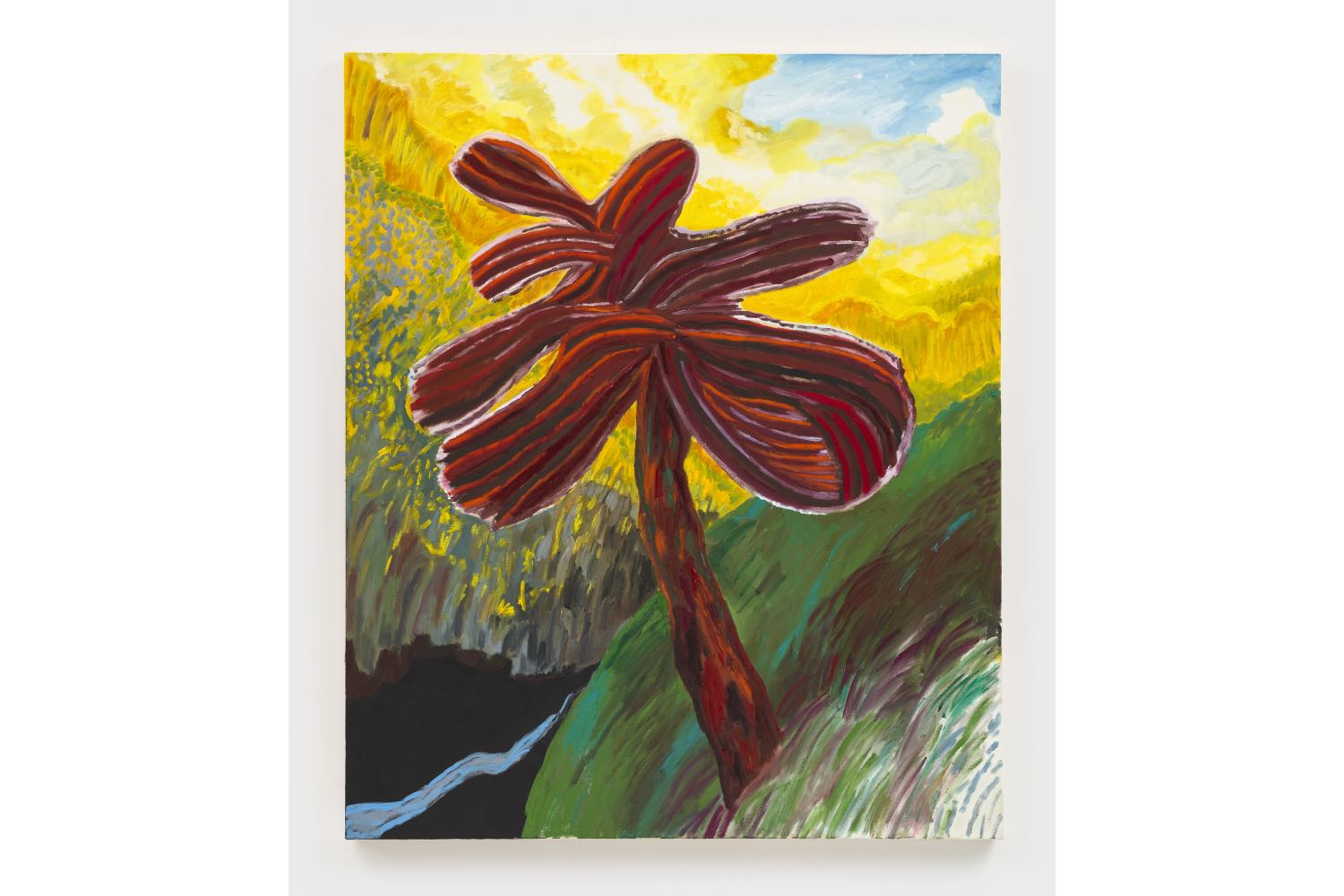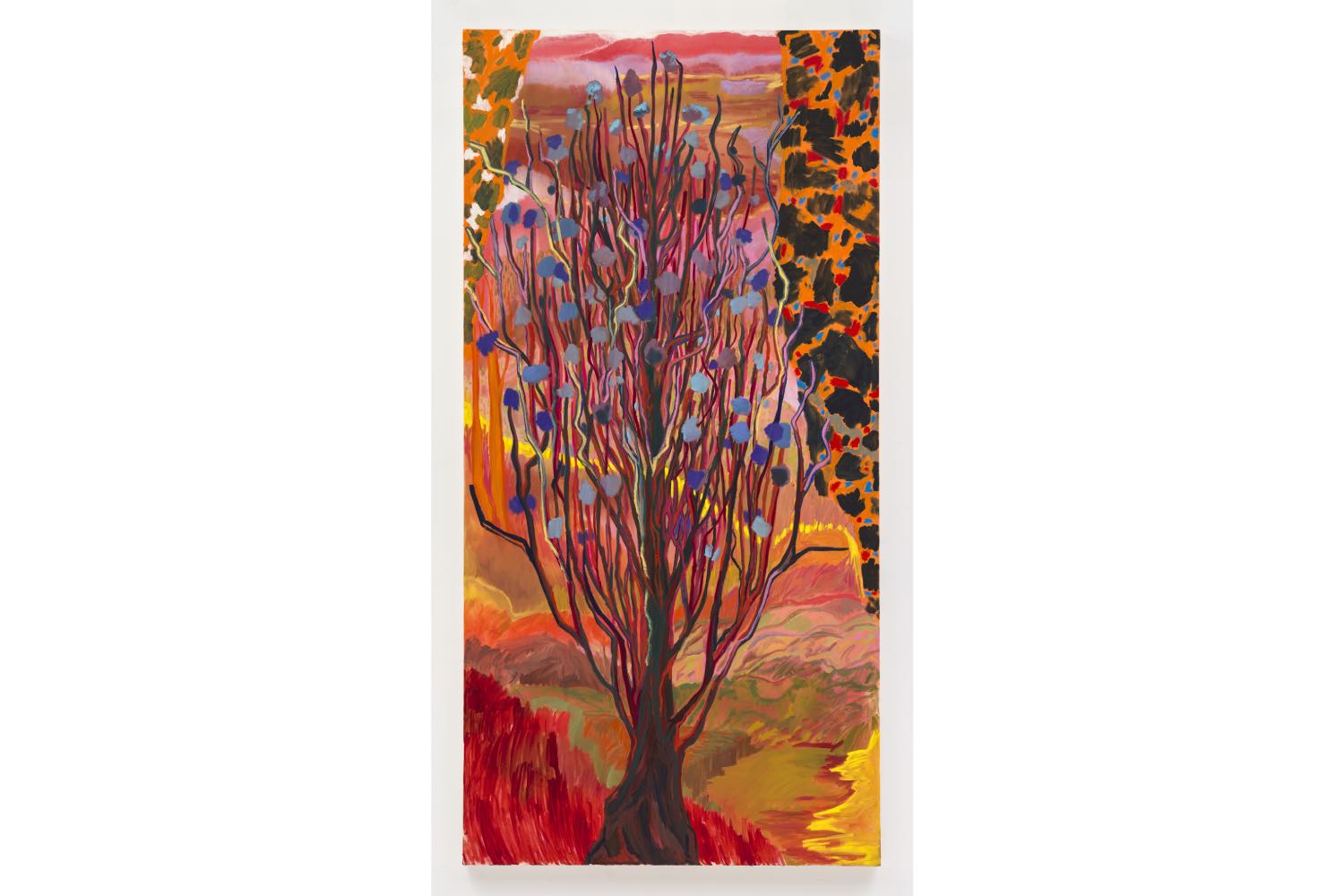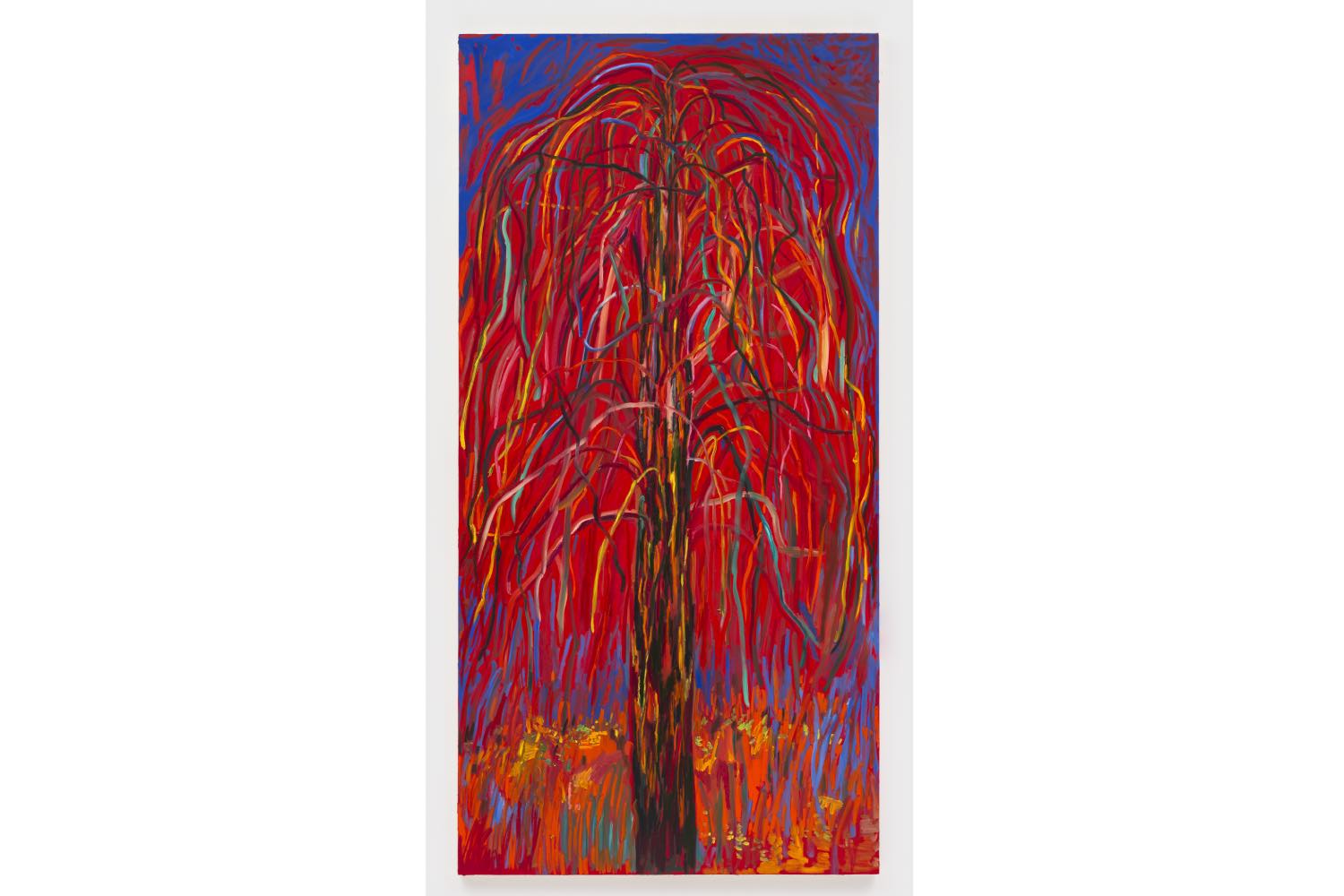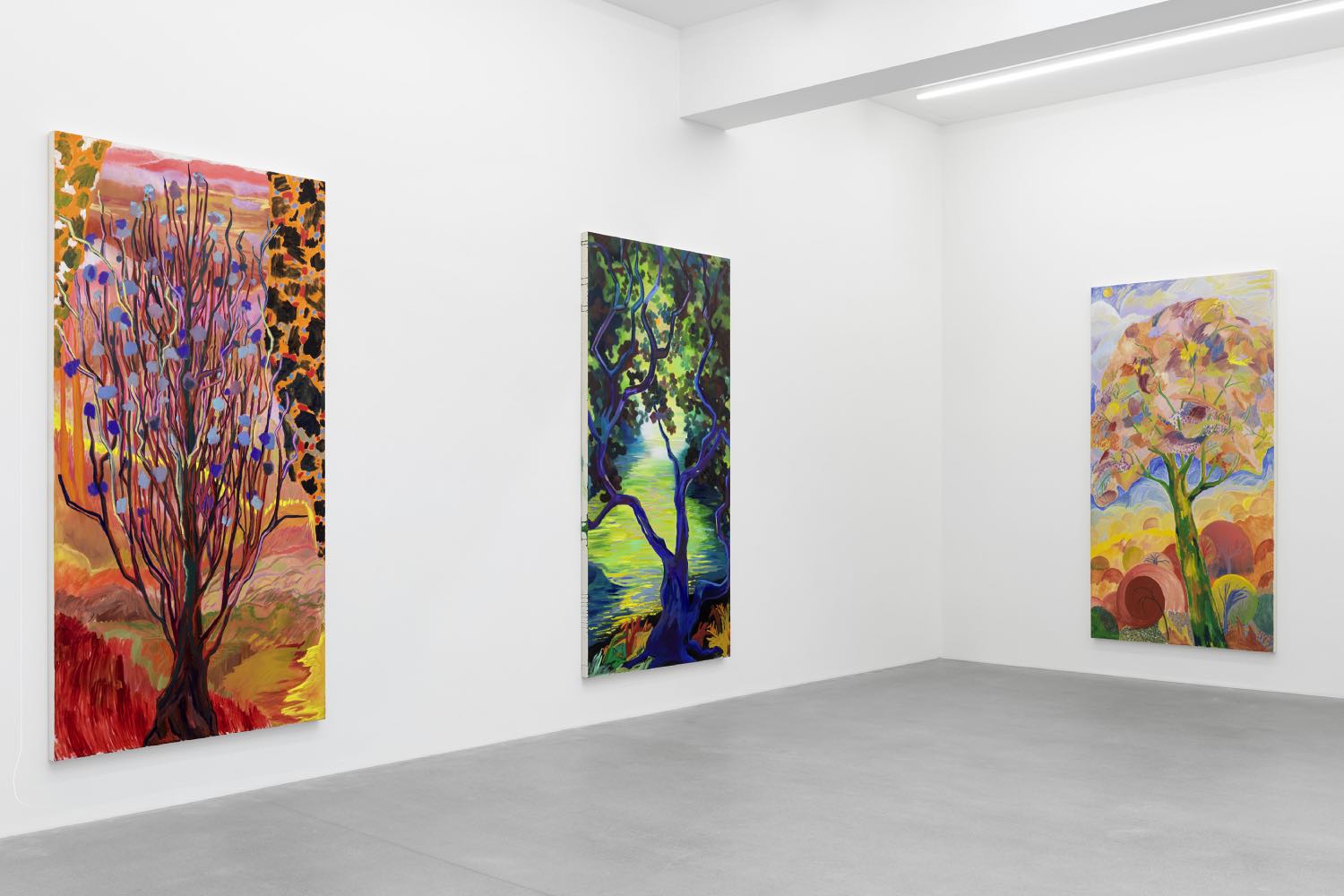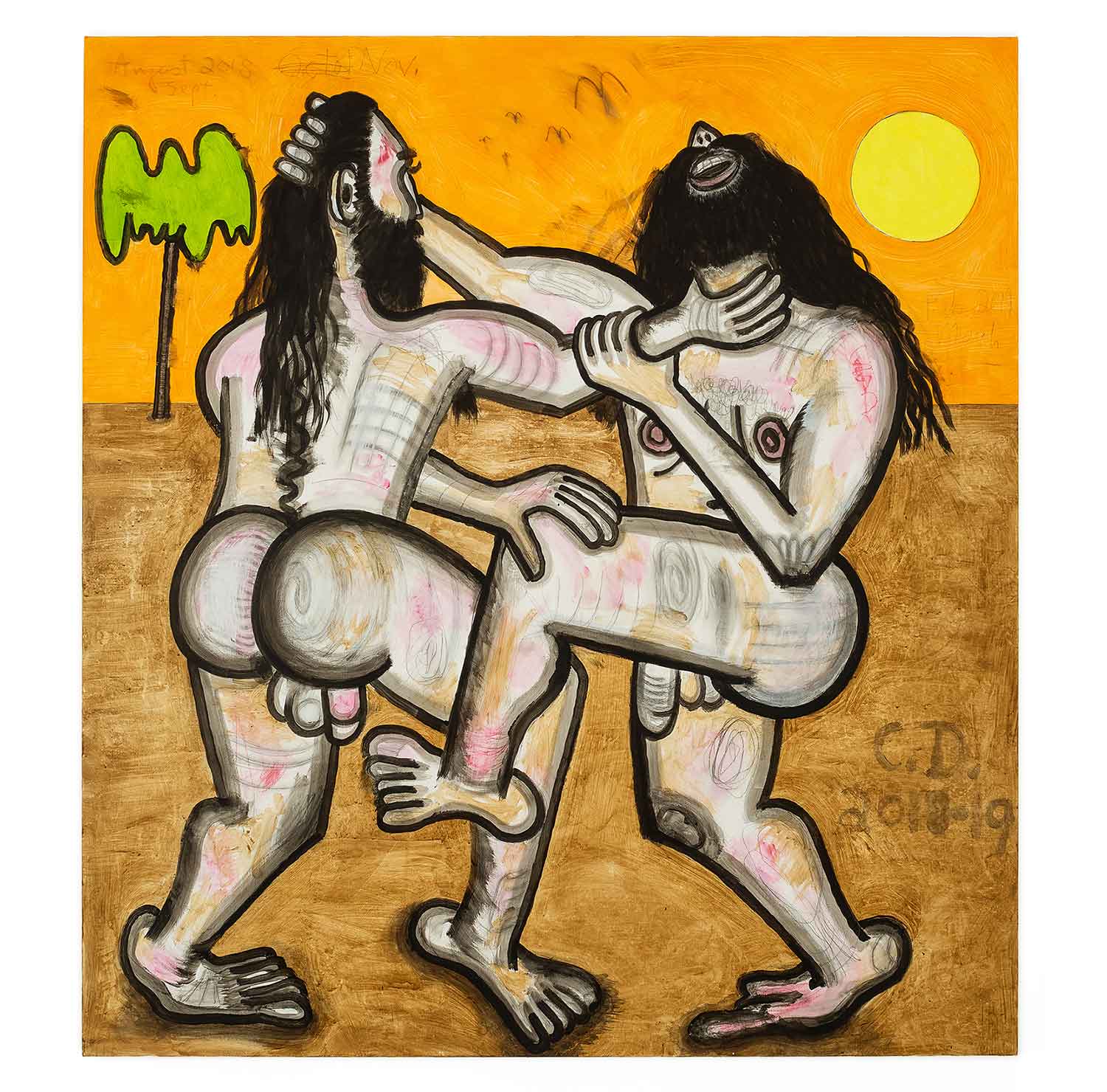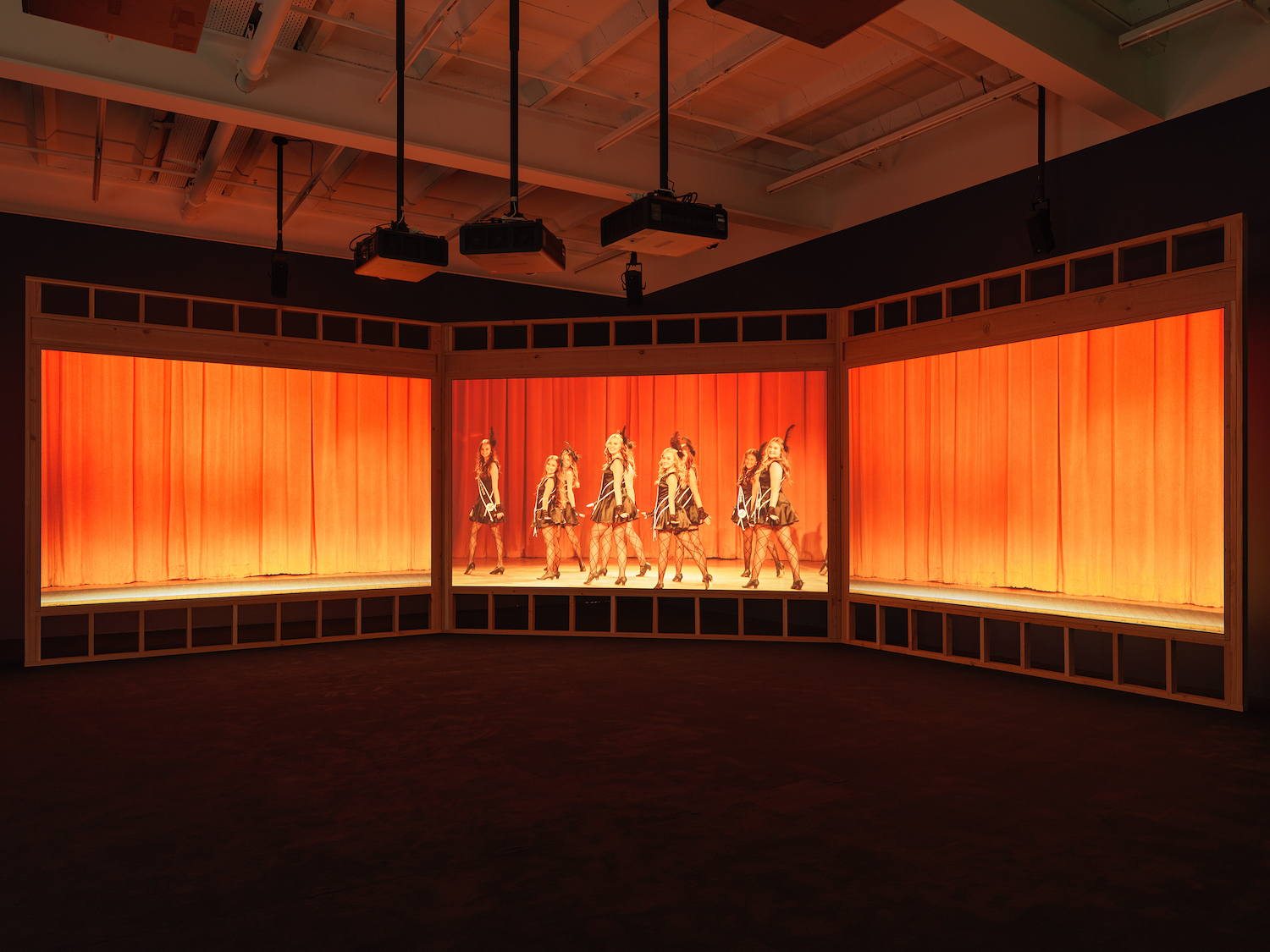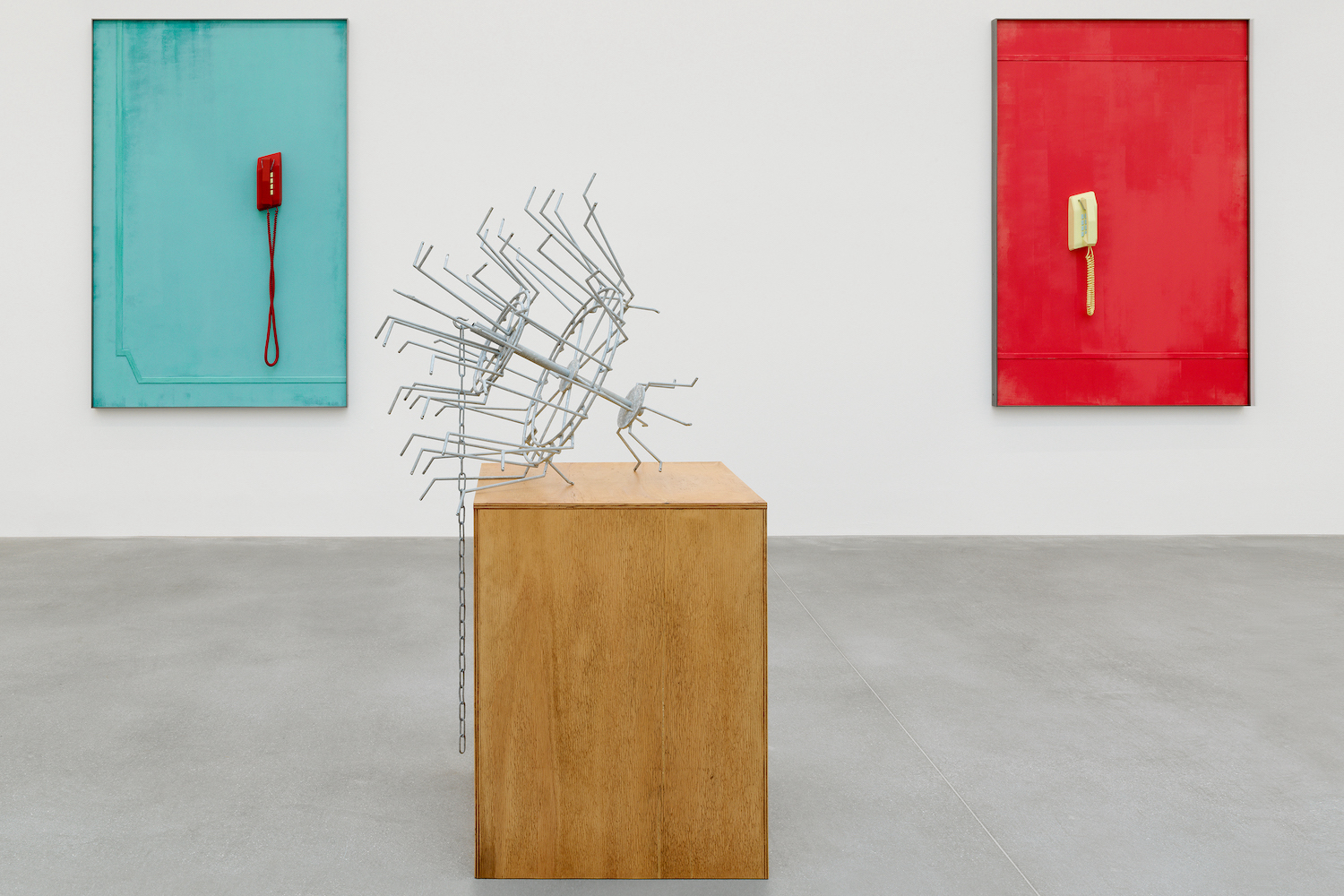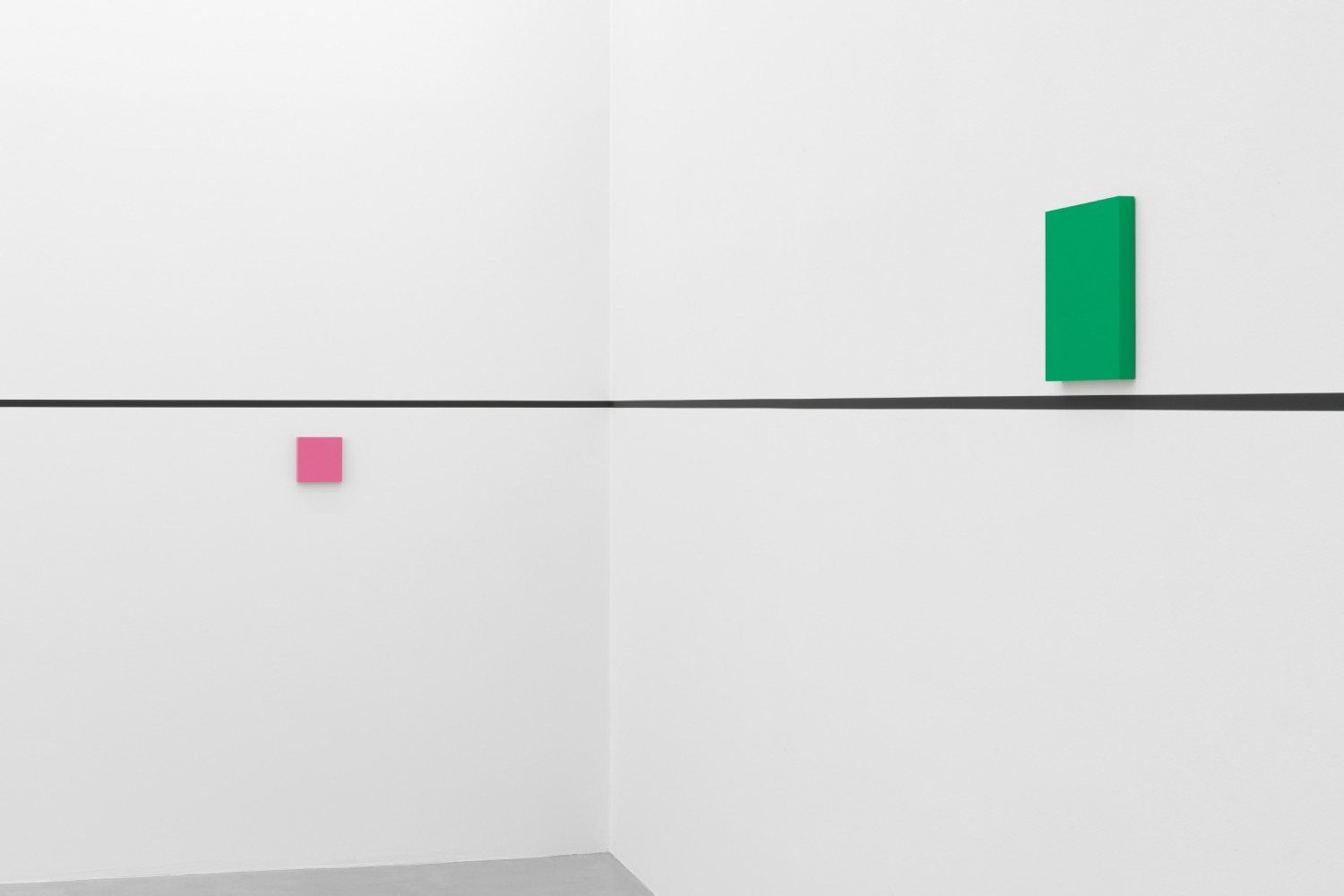Shara Hughes, an abstract artist renowned for her unique and vividly painted imaginary landscapes, has captivated audiences with her expressive artworks since the mid-2000s. Her breakthrough moment came at the 2017 Whitney Biennial, where her colorful canvases garnered critical acclaim. Since then, she has continued to astound with international museum and gallery shows, including her fifth solo exhibition, “Tree Farm,” at Galerie Eva Presenhuber, Zurich. This new show is a testament to her exploration of psychologically charged, invented landscapes – a style inspired by modernist movements such as Fauvism, Art Nouveau, and German Expressionism, yet distinctly her own.
Hughes’ artistic journey is a testament to her dedication and growth as an artist. After graduating from the Rhode Island School of Design in 2004, she embarked on a journey of artistic exploration. Initially, she created quirky, collage-like paintings of packed interiors, filled with colorful furniture, decorative objects, patterned rugs, generic artworks, and other unexpected things. Over time, she honed her skills at various artist residencies, including the esteemed Skowhegan School of Painting and Sculpture in 2011 and the Atlantic Center for the Arts residency in 2013, where she was mentored by Dana Schutz. This evolution in her art is a testament to her commitment to continuous growth and development.
Adding figures to her domestic scenes, she soon shifted these elements to landscape scenarios, before completely eliminating them, leaving only the landscape. The turning point came with her 2016 solo show “Trips I’ve Never Been On,” at New York’s Marlborough Chelsea, which featured a new series of visionary landscape paintings. By maintaining a collage-like approach in her creation of forms, and application of paint, her landscapes represented nature but weren’t directly based on it.
Since 2016, the Brooklyn-based artist has continued developing her lively mindscapes by improvising the images from start to finish, making her canvases more about painting than nature. Working intuitively in diverse painterly styles, she has imagined large-scale pictures of forests, fields, mountains, oceans, rivers, lakes, swamps, sunrises, sunsets, flowers, and trees. However, “Tree Farm” is Hughes’ first exhibition to focus on the arboreal subject.
Presenting eleven large-scale and five smaller vertically formatted canvases, along with a new series of small-scale, vibrantly glazed ceramic sculptures, the show turns the gallery’s expansive white box into an enchanted forest. Each canvas focuses on an individual tree, greeting visitors with the joyful, large-scale Branching Out (2024), which depicts a colorful forest through the branches of a nearly barren pine tree. This is paired with Shifty (2024), a smaller painting of an expressively rendered yellow tree that stands out from its neighbors.
Diving deeper into the exhibition, eight large, narrow canvases command the viewer’s attention with their parade of vibrant hues and shapes, each striking a different emotional tone. The surreal looking Many Hats (2024) captures a red, cubistic tree trunk balancing circular balls of green leaves at the tip of its branches. Cover Me in Darkness (2024) paints a romantic vision of a neon-colored bayou viewed through bending, blue-lit boughs. And Wits End (2024) portrays a wild, fiery weeping willow with its tentacle-like branches twisted into a tangled mess. Like doorways or windows into another realm, these paintings become portals into the artist’s impassioned state of mind.
New to the inventive artist’s oeuvre, the small ceramic trees represent her initial foray into sculpture. Inspired by the opening of a clay workshop in her Brooklyn studio building, these playful seedlings have roots that go back to her childhood and her family’s Georgia pine tree farm, where Hughes would be in touch with nature while finding creative ways to interact with it. All these years later, these woodland memories have opened another gateway to a sculptural domain, one that promises to present new challenges and reach new heights in the coming years.


